Self-loading rifle Winchester Model 1903 (USA)
The most important role in the development of the Winchester Repeating Arms Company was played by the designer Thomas Crossley Johnson. He became an employee of Winchester in 1885, and over the next several decades was engaged in the development of new types of small arms. For half a century of work as a designer TK Johnson received an 124 patent for his design. Part of the samples created by him, was brought to mass production and was produced for supply to various customers. Since the end of the XIX century, TK Johnson was engaged in the subject of self-loading weapons, capable of independently carry out all operations for reloading and cocking mechanisms.
In August, 1901, by TK Johnson received a patent under the number US 681481A for the sample "Automatic firearms" ("Automatic small arms"). The document confirmed the designer’s right to invent a new self-loading rifle based on the use of a free gate, a tubular magazine and some other ideas offered by the gunsmith. In addition, the new weapon was to use the .22 Winchester Automatic cartridge, also designed by TK. Johnson
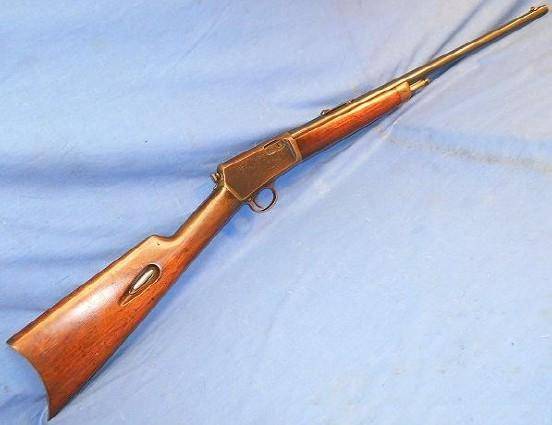
General view of a Winchester Model 1903 rifle. Photos Historicalfirearms.info
The invention of the designer, confirmed by the patent, interested the management of the company Winchester Repeating Arms Company. At that time, gunsmiths of leading countries were just beginning to develop automatic systems that could be of great interest to potential customers. In this regard, it was decided to check the existing project of T.K. Johnson, if necessary, modify it and then put a new weapon in the series. The timely completion of work allowed the first serial model of the new system to be released on the arms market and thus occupy a vacant niche with all the positive consequences of an economic nature.
Before 1903, the Winchester design team was engaged in the development of the project, which resulted in the emergence of a complete set of documentation allowing to start production. In the same year, the first commercially available rifles were launched. By the year of release, the latest self-loading rifle was given the designation Winchester Model 1903. The sale of the first products of the new model secured the Winchester M1903 the honorary title of the world's first serial commercial self-loading rifle chambered for ring ignition.
In terms of overall layout, the M1903 rifle was supposed to fit other models in its class. The project proposed to use a relatively long barrel, under which the mechanisms of the recharge system and the wooden forearm were to be installed. All the main parts of the weapon were to be placed inside the receiver, divided into two blocks. It was also planned to use the traditional for that time butt with a thin neck and, in a corresponding modification, a pistol projection.
Especially for the new rifle was developed cartridge ring ignition, designated .22 Winchester Automatic. Its design was based on the existing .22 Long Rifle, but had some differences. The main differences between the cartridges were the use of smokeless powder and a longer sleeve - 16,9 mm against 15,6 mm in .22 LR. The other parameters of the two rounds were almost the same. In particular, an old 5,6 caliber lead bullet was used.
The main reason for the appearance of a new cartridge was the designer’s desire to protect advanced auto-loading weapons from damage. At the turn of the century, the shooters continued active exploitation of .22 LR cartridges with black powder, distinguished by a large number of soot. A self-loading rifle for reliable operation needed a less “dirty” ammunition, which was created by TK Johnson To avoid confusion and the use of incorrect ammunition, the cartridge for the Winchester M1903 rifle was slightly longer than the standard .22 LR, which excluded the use of the latter. In the future, the development of small arms led to an almost complete abandonment of cartridges with black powder, due to which the need for a special cartridge .22 Win Auto disappeared. Later it turned out that the M1903 was the only rifle for this cartridge. Other systems under the .22 Win Auto were not developed.
The main unit of the perspective rifle that contained most of the parts was the receiver. It was made in the form of a detachable device, consisting of two parts. The top was a polygonal box with a U-shaped cross section. In the front wall of the upper part of the box there were fastenings for the barrel and the barrel grip for reloading. It was also proposed to attach a wooden forearm to it. In the upper part of the right wall of the receiver, a small window was provided for ejection of spent cartridges.
The second part of the receiver was an L-shaped part with low sides on the bottom bar. On the upper part of this part there was a screw for fastening the two halves of the receiver, and on the bottom were mounted the units of the firing mechanism. The back wall of the L-shaped frame had a hole for the installation of the store. The store itself was to be located inside the wooden butt. The two halves of the receiver should have been connected using the front latch and screw in the back. At the same time, the rifle was also fully assembled with its operational status.
Inside the receiver should be placed the bolt of the original design, the reciprocating spring with a lever and firing mechanism. The shutter was carried out in the form of an elongated part with an internal channel. A spring loaded drummer was placed in the channel, capable of moving forward and held by the spring in the rear position. The drummer was made asymmetrical, because it had to hit the rim of the sleeve with an initiating charge pressed in there. An interesting feature of the M1903 rifle was the lack of a direct connection between the bolt and the recoil-fighting spring. They had to interact with a special lever.
Behind the bolt there was a swinging arm-rocker of complex shape with a large hole in the upper shoulder. On the lower shoulder there were fastenings for a returnable combat spring. Also in the central part of the lever a small recess was provided for contact with the trigger gear. In the lower front part of the receiver was a cylindrical reciprocating combat spring with a guide rod. During the operation of the mechanisms, during the compression of the spring, the rod could not only pass through the spring support plate, but also swing due to the conical shape of the hole in it.
Rifle T.K. Johnson received an original recharge system, which was also used on several other Winchester designs. For pre-cocking mechanisms it was proposed to use a long rod mounted under the barrel. When you click on the head of the rod, protruding in front of the forearm, the shank had to go inside the receiver and interact with its mechanisms. The rod was returned to the neutral position by means of a spring mounted on it.
The trigger mechanism of the rifle was fairly simple and consisted of only a few parts. There was a trigger placed inside the safety bracket and equipped with its own leaf spring, as well as a swinging sear, designed to lock the mechanisms before firing. In the rear rack of the safety bracket there was a fuse button that blocked the movement of the trigger. It should be noted, the fuse did not appear immediately. The first batch of rifles did not have such a system.
The 1901-1903 project involved the use of a tubular magazine placed inside the butt. The accommodation tube for the cartridges of the appropriate diameter was to be located in the longitudinal channel passing through the entire butt. The head of the tube was equipped with a special tray of complex shape, the upper cut of which was parallel to the line of movement of the shutter. The tray was placed inside the window shutter lever. The shank of the store received a plate handle and lock. The main store tube could be removed from the weapon for equipping with cartridges. Inside the tube there was a cylindrical feeder and a supply spring. The store managed to accommodate 10 cartridges of a new type.
In the first version, the Winchester Model 1903 rifle was to be equipped with a rifled 5,6 mm caliber barrel with a 20 inch length (510 mm or 91 caliber). The barrel was connected to the receiver with a thread.
The rifle received wooden fittings in the form of a forend and butt. The handguard of the U-shaped profile was supposed to cover the reloading rod, as well as protect the shooter’s hands from the heated barrel. The butt of the updated design was proposed, within which there was a channel for installing the store. Due to the use of a relatively large handle placed on the shank of the magazine, a deepening of a rounded shape appeared in the back of the butt. The wood in this part of the butt was covered with a metal plate on the butt plate. The accessories should be fitted with anchorage for the belt.
Weapons equipped with mechanical sights only. At the muzzle of the barrel was fixed front sight, and in the rear of the barrel should have been installed open mechanical or annular sight. The design of sighting devices repeatedly changed during serial production and in the development of new modifications.
The first version of the Winchester Model 1903 rifle had a length of 940 mm and weighed (without cartridges) no more than 3,2 kg. In terms of basic characteristics, this weapon should not be different from other samples using the .22 LR cartridge. To simplify transportation, a relatively long rifle could be disassembled into two parts.
For ammunition equipment shop should be removed from the weapon. To do this, he turned the handle at a certain angle and removed from the butt. After that, it was necessary to consistently place 10 cartridges into the upper section of the cartridge and return the magazine to its place. Pressing the rod under the barrel cocked the mechanisms to prepare for the shot. After that, the weapon was ready to fire. Project T.K. Johnson meant the use of free shutter with non-standard arrangement of mechanisms. The rifle was supposed to shoot from an open bolt and work according to an unusual algorithm by modern standards.
When the trigger was pressed, the lever-sear had to release the large lever associated with the reciprocating combat spring. As the spring opened, the spring pushed the lower arm of the lever, after which the upper arm forced the bolt to move from the rear to the front. When this happened, the capture of the upper cartridge from the store took place, sending into the chamber and producing a shot with the help of an existing drummer.
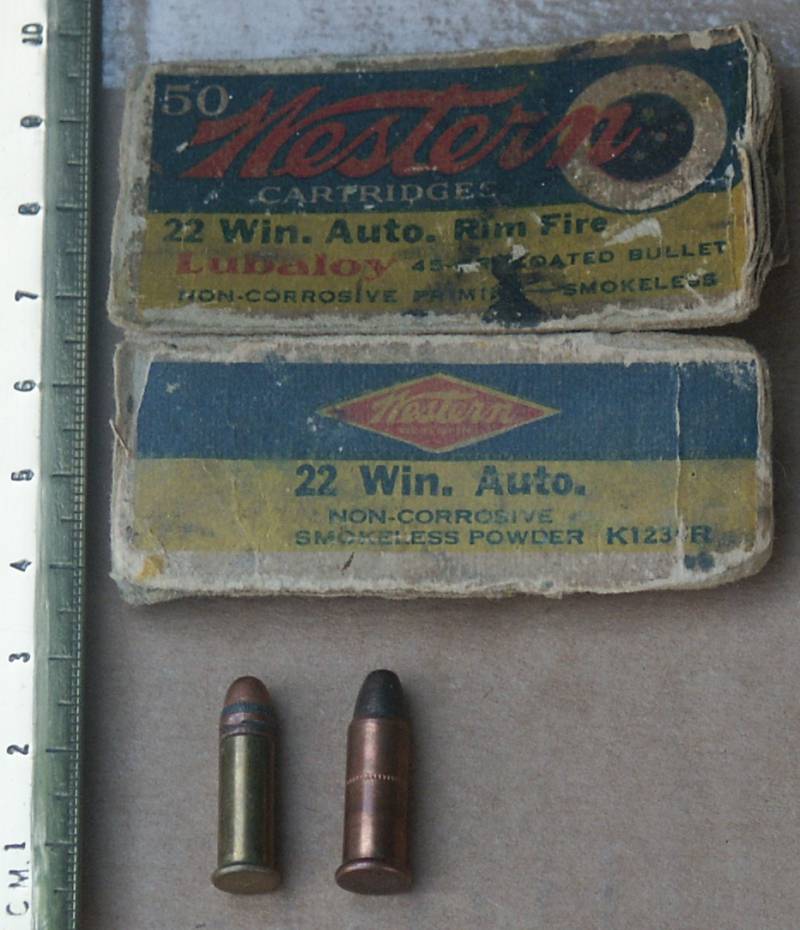
Cartridges .22 LR (left) and .22 Win Auto (right). Top - boxes for cartridges .22 Win Auto. Photo of Wikimedia Commons
Under the effect of recoil, the bolt recoiled, in which this part made the lever swing and squeeze the return-combat spring again. At the same time, the liner was removed from the chamber and then discharged through a window in the receiver. When the extreme rear position was reached, the shutter stopped and also pressed down the lever that engaged with the sear. The weapon was ready for a new shot.
The production of the new rifle began in 1903 year. Soon this weapon entered the stores and received the deserved title of the first type of its class, which reached commercial supplies. For some time, the Winchester Repeating Arms Company received significant profits due to the absence of direct competitors. At that time, the creator and manufacturer of the new system could at a time become a monopolist, receiving deserved fame and due material remuneration in the form of payment for the supply of weapons.
Model 1903 rifles were available in two versions: Plain (“Simple”) and Fancy (“Fancy” or “Fashion”). Differences rifles of the two versions consisted only in decoration. “Simple” products received furniture made of walnut wood with smooth surfaces. Fancy rifles were distinguished by the presence of a pistol protrusion on the butt, as well as rifling on the neck of the butt and handguard. Mechanisms and principles of action did not differ.
The first rifles of the new type were produced according to the original project, but it was soon decided to change their design. After the release of 5 thousand products in the basic version, the production of improved rifles began, which were distinguished by the presence of a fuse on the trigger guard. Other mechanisms have not changed. In the future, production of M1903 rifles continued without any special design modifications.
In 1919, the manufacturer introduced a shortened and lightweight version of the rifle called the Model 03. Model 1903 and Model 03 were produced in parallel for several years. In 1932, Winchester management decided to discontinue M1903 from production. At the same time, however, it was suggested not to stop the release of such weapons completely, but to replace the old model with an updated product. After upgrading the rifle received the designation Model 63.
During the upgrade, the rifle of the basic design received a different fitting, a new sight, etc. The most significant innovation project Model 63 was the use of a new ammunition. Instead of .22 Win Auto it was now proposed to use the standard .22 Long Rifle. By the beginning of the 1930s, black powder cartridges were almost completely out of use, which eliminated the need for special ammunition designed to “protect” weapons from the increased formation of carbon deposits. The .22 Winchester Automatic cartridges continued to be produced in large quantities for some time, but were later removed from production due to the lack of prospects. As a result, the M1903 rifle remained the only weapon model intended for the use of this cartridge.

Advertising rifle Model 63. Figure Rifleman.org.uk
The Winchester Model 63 self-loading rifle was manufactured from 1933 to 1958 years. An interesting fact is that the change in the type of cartridge went to the benefit of the weapon and had a positive impact on the volume of orders. So, in the 1903-32 years (29 years in the series) 126 thousand rifles of the basic version of Model 1903 were released. Updated Model 63 rifles were produced 25 years, and during this time 175 units of thousands of such weapons were sold.
Interestingly, over time, the M1903 family rifles were copied by some other small arms manufacturers. Some of these “clones”, which differ from the basic weapon by certain features, are still being manufactured and sold. Among other things, it allows shooters to purchase products of interest to them, even several decades after the production was discontinued by the maker.
Rifles of the Winchester Model 1903 family were primarily intended for sale to amateur shooters. However, some of these weapons were purchased not by retail stores, but by government customers. In 1916, the Royal Air Force Corps of Great Britain (the future Royal Air Force) ordered M600 1903 rifles for use in the training of gunners. In addition, the contract for the supply of weapons meant the sale of 500 thousand cartridges, along with the first batch of rifles. In the future, the customer was to receive several more batches of ammunition for 300 thousand cartridges each with monthly deliveries.
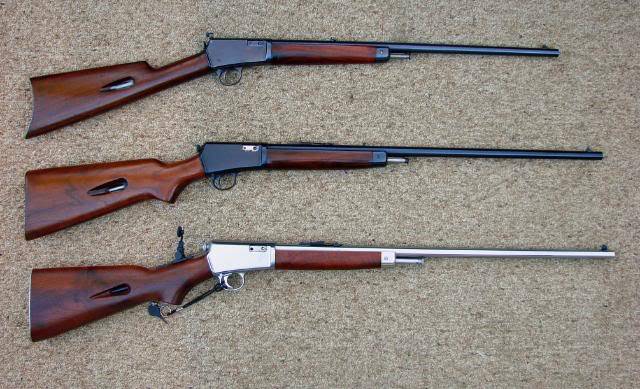
Rifles of the M1903 family. From top to bottom: Winchester Model 1903, Winchester Model 63 and a modern copy of the Taurus Model 63. Photo Rimfirecentral.com
The first batch of 300 rifles was handed over to the customer by the end of the 1916 year. Another three hundred weapons were handed over to 17. The new rifles were originally proposed to be used for infantry training of flight personnel. Later, the pilots began to take this weapon with them in flight and use it with other systems already in service. According to some reports, the British pilots and air arrows worked hard at shooting: an easy calculation shows that the monthly supply of .22 Win Auto cartridges allowed us to make 500 shots from each rifle.
According to some sources, at the moment the fate of only one M1903 rifle delivered to the UK is credible. This item is stored in the Imperial War Museum. The fate of the other rifles is unknown, but, apparently, by some means or other they became the property of amateur shooters, primarily the pilots themselves, who used such weapons earlier.
The Winchester Model 1903 was the first self-loading rifle chambered for with a ring ignition, which managed to reach mass production and sales. This weapon was quickly able to interest potential customers, which led to the corresponding production volumes. For more than half a century, more than 300 thousand of these rifles were produced and sold in several versions. Despite the comparative simplicity of the design and specific ammunition (in earlier versions), rifles of the family enjoyed deserved popularity and are still of particular interest to collectors and amateur shooters.
On the materials of the sites:
http://historicalfirearms.info/
http://rifleman.org.uk/
https://gun-data.com/
http://rimfirecentral.com/
US Patent 681481A:
http://google.com/patents/US681481

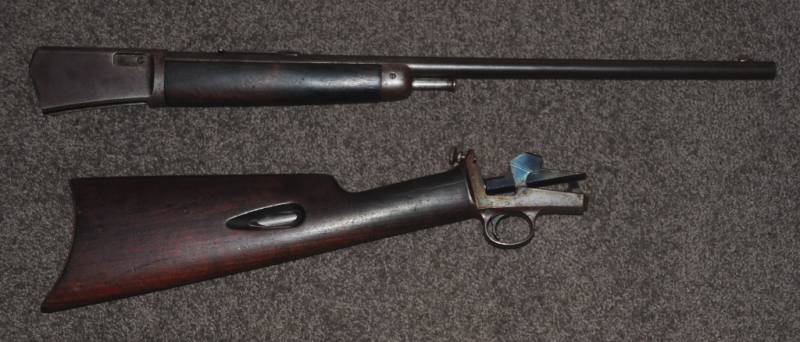
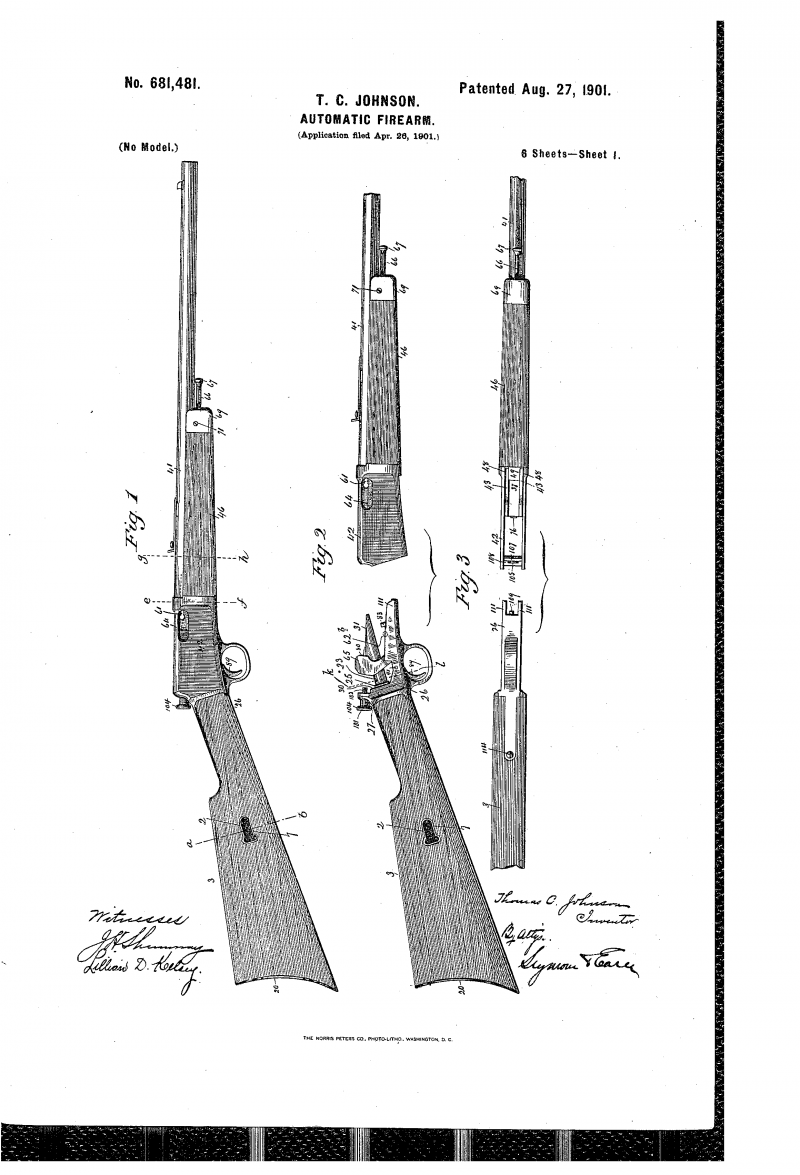
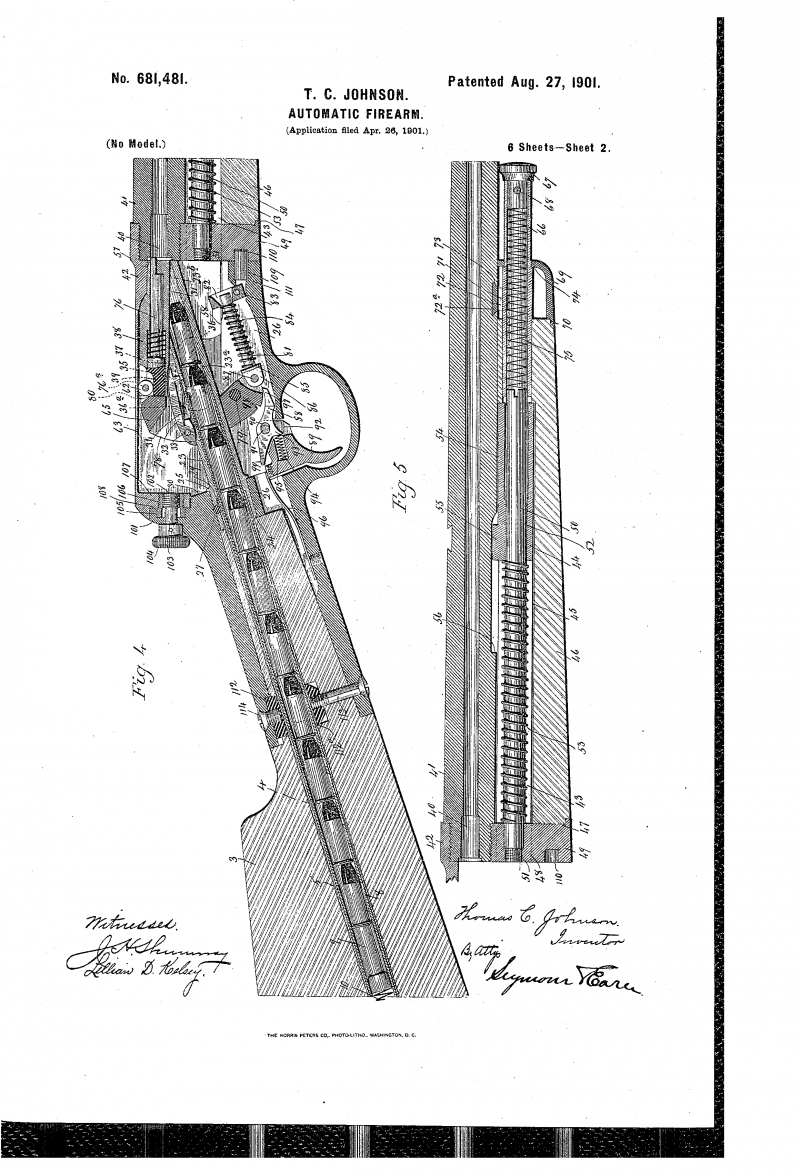
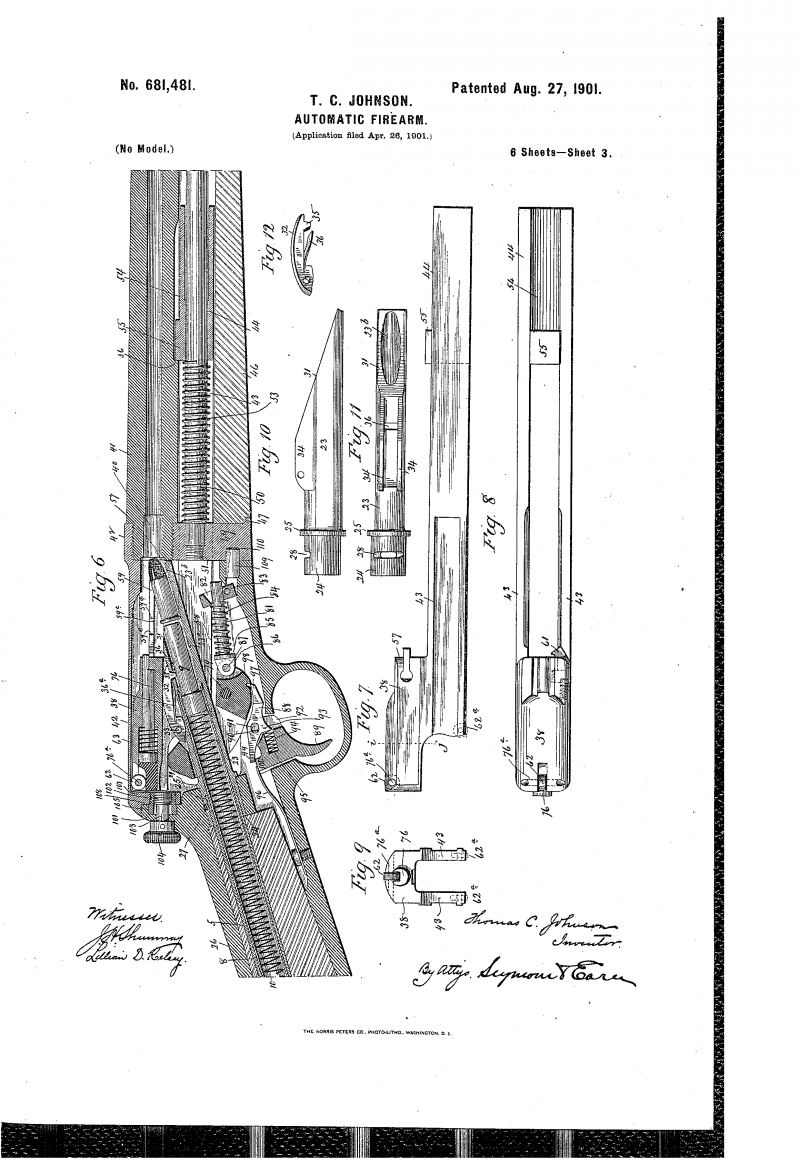
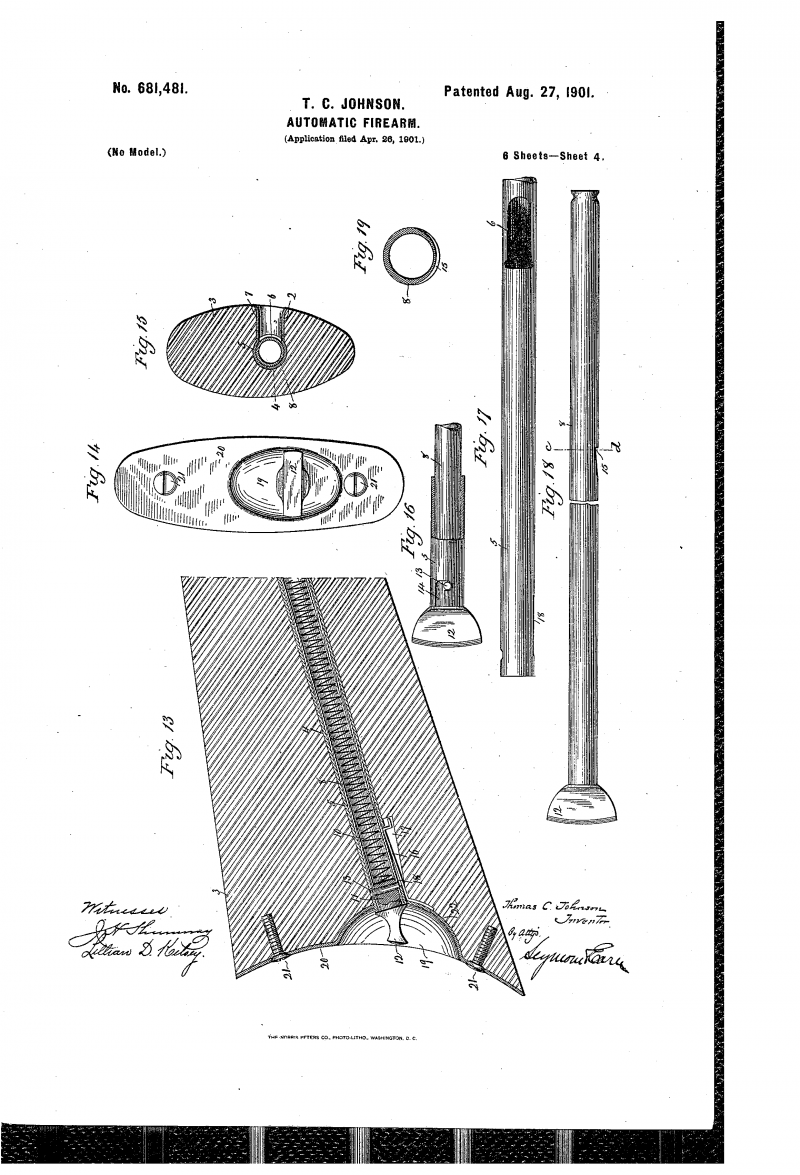
Information